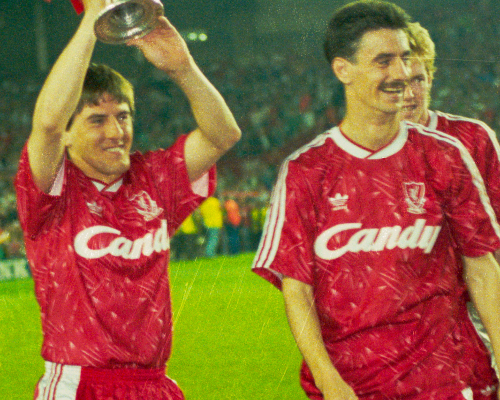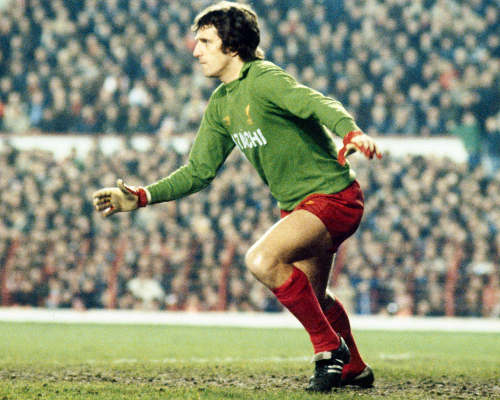Tomkins: Buying and selling smart
Football author Paul Tomkins examines why marquee signings aren't necessarily the way for teams to become great...
If you ever worry about Liverpool signing a player who is not a household name, I have something for you to think about.
Now, each and every one of you will have your own unique knowledge banks. If you're reading this overseas, in a small nation, you may know about your country's star man, whereas most of the world may not be aware of him. Obviously there are those of you who are clued up enough to know the names of all the players in all the leagues around Europe and beyond, but I'm talking about the average fan here.
Most people will know only the regulars (and some squad members) in Premier League teams, plus those who play for major European clubs, as well as those who have featured at major international competitions like the World Cup. I think that seems a fair assumption.
The kind of people who moan about never having heard of someone tend to be those who, well, haven't heard of many players. For the purposes of this experiment I created three categories for Liverpool's Premier League-era signings (the database I used was 1994-2011): the Household Names; You May Or May Not Have Heard of Them; and the Relative Unknowns. All of these titles refer to the players at the point they joined the club; obviously after then we knew more about them, although that wasn't really the case with Bernard Diomède.
While this is not an exact science (you are welcome to try this yourself), I found that the group of players which has averaged the most Premier League starts happened to be...the Relative Unknowns. What's more, not only did they start, on average, 10 percent more games during their time at Liverpool than the Household Names, they cost less than half of that group to purchase.
That's right: Liverpool got more games from these players, for less than half the price.
The fact that Sami Hyypia, John Arne Riise, Lucas Leiva and Daniel Agger (to name four relative unknowns before they signed) were unfamiliar to a lot of Liverpool fans had little impact on their ability to become regulars in the Reds' XI.
In today's money (using the Transfer Price Index inflation I helped pioneer), those four cost an average of less than £7.5m each.

Now, of course, they have all become Household Names. But identifying talent before they become so well known is a key part to improving your side. That's what scouting and purchasing should be all about. It's easy to identify the biggest names, and, if you have billions in the bank, lure them to your club.
You can make your money go further by being smarter. You don't have to sign only total unknowns from footballing backwaters, but equally, it's easy to be dazzled by someone's profile and achievements to date, to the point where you're buying their past (which is of no use to you) and not their future.
An example of this can be seen with Chelsea's purchase of Fernando Torres, who is also a case study in the fear of losing your star player (and how it's rarely as bad as you expect it to be).
Before going any further, I want to make it clear that I'm not someone who hates my favourite players or managers as soon as they leave, or think that they are "Judases" if they decide to move on. Players come, players go. I don't want them to succeed at Liverpool's expense, but I also don't hate them, and often quite enjoy seeing them do well.
But when looking at Torres, who was nearly 27 when he was sold for £50m, it seems like Chelsea paid the fee for who he used to be; they paid for the player Liverpool had bought in 2007, not the one he was by 2011. Torres had a good season in Europe last season, and was an impact player the year before when picking up a couple more medals, but he has just 15 league goals from 82 games; down from 65 in 102 with Liverpool.
It's dangerous to write any player off as finished, or definitely past their best when still in their 20s, but Chelsea bought a megastar for megabucks and possibly weren't thinking clearly.
In the two and a half years since Torres moved south, Daniel Sturridge has scored 30 league goals in just 63 appearances; which is 15 more goals in 19 fewer games. Ironically, Chelsea chose to sell him to Liverpool.

Sturridge cost Liverpool a quarter of what Chelsea paid for Torres, yet is younger, faster (in terms of the players now), and again based on current ability, far more prolific. Sturridge was also a Household Name, in that anyone with even a passing interest in the Premier League will have known of him, but unlike Torres, he wasn't a superstar. He was known, but not globally renowned.
Go back to that fateful January of 2011, and you can trace the path to where Torres, at Chelsea, started to really struggle, and Sturridge, also on Chelsea's books, went out to Bolton on loan and scored eight times in 12 games. If you asked any Liverpool fan back then which one would score twice as many league goals (from far fewer games) as the other over the next 30 months, not many would pick the young man at the fringes of Chelsea's squad at the time.
I believe that, on average, you get what you pay for; paying more for a player leads to a greater chance of success. However, as seen with Torres (and Andriy Shevchenko), a player's history can bedazzle, and obscure the reality. Unless you can afford to lose tens of millions on half a dozen players by buying established stars who are already at their peak, you have to approach things differently.
The average age of the Household Names when purchased is 26; but compare that to the Relative Unknowns, at just 22. (As an aside, I wrote a piece in January where I noted that: "Bob Paisley, the legendary manager, bought 20 players who played league football for the Reds. Of those 20, eighteen were 24 or under. The other two were 25 and 26. The average age was just 22.")
The players we know best tend to be at the peak of their careers, whereas the skill, as far as scouting is concerned, has to be to find them just as they're starting on a sharp upward curve.
While Bob Paisley signed a few well-known British players like Kenny Dalglish and Graeme Souness, it was probably the cheaper, usually younger signings - the kind rivals weren't spotting and developing - that was the reason Liverpool went on to dominate England and Europe; players like Steve Nicol, Ian Rush, Bruce Grobbelaar, Alan Hansen, Phil Neal and Ronnie Whelan.

These were all very obscure players when Paisley signed them. (Geoff Twentyman was clearly a great scout, and played a major role in the success of that era.) Indeed, if you compare the obscure bunch against the more well-known Paisley purchases you'd probably side with the relative unknowns. After Dalglish, Souness, Lawrenson and Alan Kennedy, you've run out of "legends", with Craig Johnston and David Johnson the next-best on the list.
I therefore make it four Liverpool legends who were signed when well-known, but six who were hitherto unknown. And for the combined fees paid for Frank McGarvey, Craig Johnston and David Hodgson - all well-known top-division players in Scotland and England when signed - was £200,000 more than the entire outlay on the thirteen unknowns brought to the club between 1974 and 1983. (Excluding reserve goalkeepers.)
Those unknowns went on to play 3,673 games for Liverpool.
Three-thousand six-hundred and seventy-three! (I rarely use exclamation marks, but I had to triple-check the maths on that.) That's an average of 313 games per player.
For over three times the outlay, the well-known players totalled 2,451 starts, or 272 per player. And remember, in Dalglish and Souness there were two shoo-ins for the Reds' best-ever XI, plus strong contenders in Lawrenson and McDermott. These were still, on the whole, great signings.
I'm obviously not knocking Paisley breaking the transfer record for Dalglish. But the unknowns, as a group of signings, were astonishing. Also, it's worth remembering that the 13 'unknowns' also included Kevin Sheedy, whose brilliance only came to light when helping Everton to two league titles, plus Jim Beglin, who played 98 times for the Reds before serious injury at the age of 24 virtually ended his career.
Go back further, to the second half of Bill Shankly's tenure, at which time the Reds had recently won two league titles, and you see Steve Heighway signed from Skelmersdale United, Jimmy Case costing loose change from South Liverpool, Ray Clemence plucked at 18 from lowly Scunthorpe United and that same club providing the Reds with Kevin Keegan four years later. Together they cost half of the fee paid for Tony Hateley; or half of the fee paid for Alun Evans; or half of the fee paid for Peter Cormack.

All three of those big signings were made from top division clubs at the time. I'm not cherry-picking these: the only successful big-money signing Shankly made in his final seven years was Ray Kennedy just before he resigned, and even the former Arsenal striker took two years to settle into life at Anfield.
These days, rather than obscure players being mined from the lower divisions or Scotland, they tend to be found overseas, but it's the same principle: find the stars of the future, not the past.
Everyone will make mistakes in the transfer market - even Paisley and Shankly bought their share of duds - but it's about the overall impact for the money paid. Whatever the reason, in almost 50 years' of transfers, Liverpool have had more luck with relative unknowns than they have with those signings that, we thought, would be nailed-on successes.
The best players of tomorrow may be unheard of today.
This article does not necessarily represent the position of Liverpool Football Club.
To read more from Paul Tomkins, click here to visit The Tomkins Times>>



